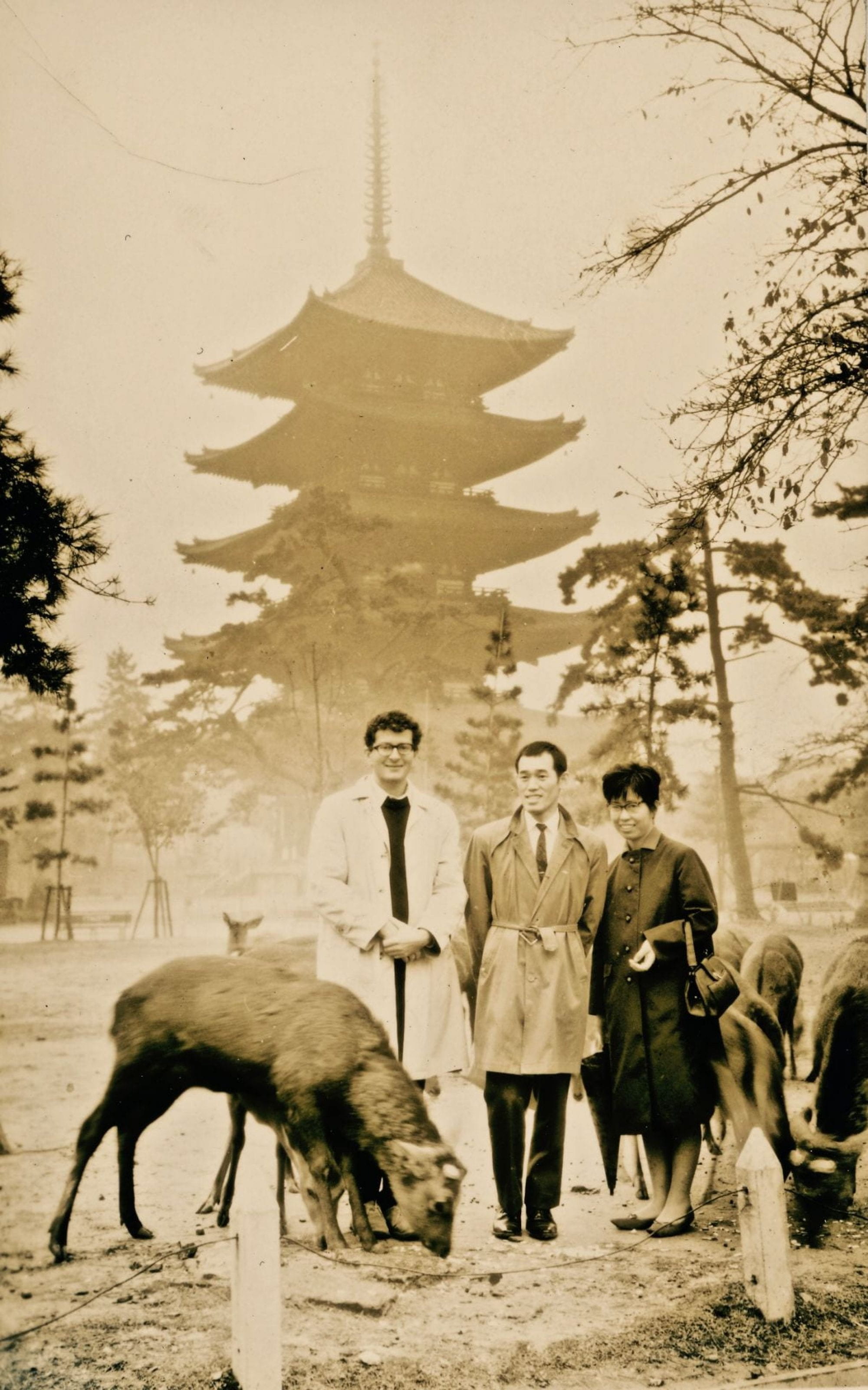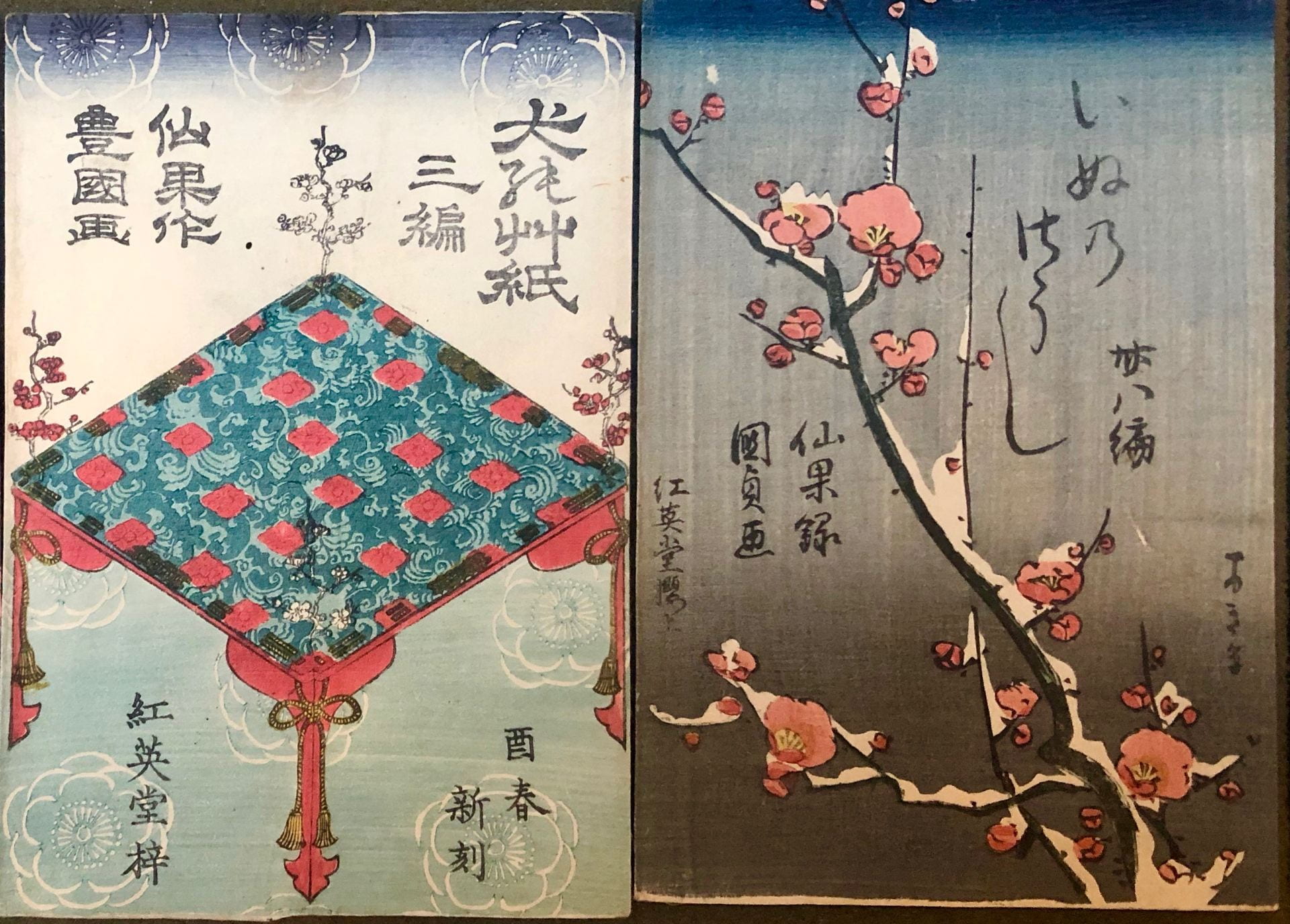Artist: Utagawa Hiroshige 歌川広重 (1797-1858), Utagawa Kunimasa II 歌川国政二代目 (1792-1857), Ryūtei Senka 笠亭仙果 (1804-1868)
Author: Ryûtei Tanehiko II 柳亭種彦 (1804-1868)
Title: Assorted wrappers (fukuro) from Inu no sо̄shi (The Storybook of dogs) 犬の双紙
Date: 1848-1881
Medium: Woodblock ink and color print on paper
Publisher: Tsutaya Kichizō 蔦屋吉蔵(つたやきちぞう), Kōeidō 紅英堂(こうえいどう)
Location: Kislak Center for Special Collections – Arthur Tress Collection. Box 38, Item 11.
Gift of Arthur Tress
This lively array of fukuro from the Arthur Tress Collection once belonged to select fascicles from the widely popular serial novel, Inu no sôshi (The Storybook of dogs). Printed as 56 volumes over a thirty-three year period, Inu no sôshi is an exemplar of the gôkan (合歓), a cheaply-produced serial publication format that emerged at the beginning of the nineteenth century concomitant with a burgeoning book culture among the increasingly literate middle and lower classes. Responding to this new readership, publisher Tsutaya Kichizō orchestrated the reworking of Kyokutei Bakin’s Hakkenden inu no sōshi no uchi (The Tale of the Eight Dog Heroes), whose 106 volume epic represents one of the longest narratives within Japanese literature. Part historical epic, part elaborate mythology, and part didactic novel, it tells the unsung story of the fifteenth century Sochi clan and the eight warriors who endure trials and tribulations to eventually reclaim their territory in the Awa region. Rife with graphic battle scenes and colorful characterizations of heroes and monsters, the story is, however, framed by overarching themes of Confucian morality and scholasticism, thus eliding the draconian censorship of the period.
There are few extant fukuro in existence; conceived as ephemera, it is quite difficult to reinsert books into these protective wrappers. Nevertheless, those from the Tress Collection were exquisitely illustrated by several and often well-known artists as Hiroshige. While they encompass a wide range of imagery—which often alludes to both the title and the various exploits contained therein—the format and palette remains relatively consistent. At the top of each, the technique of bokashi (ぼかし) was used to achieve a delicate color gradation that not only generates chromatic and compositional depth but also distinguishes the individual volumes as part of the same series. Oftentimes textual elements are cleverly incorporated into the illustration itself, as in the fukuro below that depicts a dog peering out from under two yellow umbrellas, where the seal of the publisher is prominently displayed on the left umbrella and the title of the book curves around its counterpart. Notably, the fukuro markedly differ from the Kabuki-style illustrations found within the text, perhaps suggesting that the publisher deliberately employed distinct modes of representation to publicize and illustrate the books, respectively.
Selected Reading:
Jones, Susie, and Kenji Watanabe, eds. An Edo Anthology: Literature from Japan’s Mega-City, 1750-1850. Honolulu: University of Hawaii Press, 2013, pp247-278.
Reichert, James R. “From Yomihon to Gôkan: Repetition and Difference in Late Edo Book Culture.” The Journal of Asian Studies, 75, no.2 (May), 2017: 311-322.
Posted by Francesca A. Bolfo










